
Over the past few years the debate between irons versus optics on pistols has raged both online and in person. I found myself on the “optics suck” side for many years, having tried my hand with a Shield RMS briefly in 2017 before forsaking the concept. Then in 2019 I received some proper training with slide mounted optics, and instantly became a convert. Fast forward to today, and I have optics on nearly all of my carry guns. While I am a proponent of optics, I still have love for iron sighted guns, with classic Smith & Wesson revolvers regularly seeing use in practice, carry, and competition.
Always one for gathering data and asking questions, I decided to put the irons versus optics debate to the test. Are there actually differences in performance between the two methods? If so, how much of a difference is there between them?
Range Time with Optics versus Irons on Pistols
To keep things as equal as possible, I shot with an iron sight only Glock 34 and an Aimpoint ACRO equipped Glock 34. Both used the same ammunition, and were shot cold to avoiding improvements in performance as the day progressed. I chose a handful of drills to compare the performance of the two aiming methods using time and accuracy standards. I also shot both guns during a couple of indoor GSSF matches.
As it turns out, there is a measurable difference between the two sighting methods.
Drills
Drills are an excellent way to measure performance thanks to their time and accuracy standards. As part of this project, I chose a handful of familiar drills that I thought would be good indicators of performance. These drills are the Failure Drill, Bill Drill, and Five Yard Roundup. All were shot multiple times over several range trips using the same ammunition for each gun to ensure parity between the two sighting methods. Drills were also shot cold to avoid any concerns about being warmed up with one method versus the other.
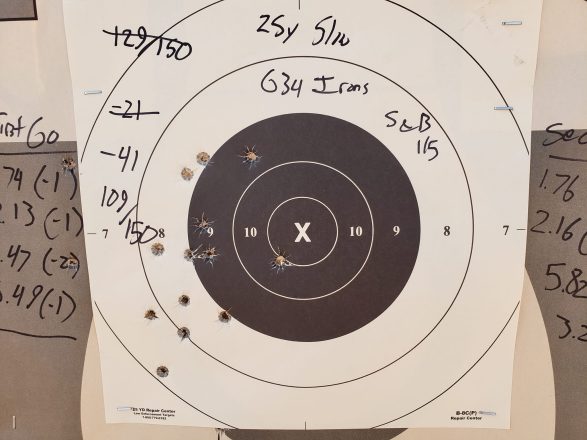
When using optics I’m usually shooting a 2.75 Failure Drill, and 3.40 Bill Drill. On average, I’m roughly 0.25 slower with my Failure Drill and 0.15 slower with my Bill Drill using iron sights. During the Five Yard Roundup, I scored a 91% and a 93% using irons. Using optics, I managed a 96% and a 97% in the same drill.
A Little Bit Further
Finally I took both guns to 25 yards, shooting 15 rounds each, untimed, on B-8 Repair Centers. This provided the most stark contrast between the two sighting systems. With two complete misses, I dropped 41 points for a total score of 109/150 with iron sights. Using optics, I only lost 11 points, bringing my total to 139/150. During this test, I had far greater awareness of where my shots were breaking with my optic equipped Glock. Additionally, I was able to put more focus into fundamentals outside of sight alignment, which surely aided in my improved performance.
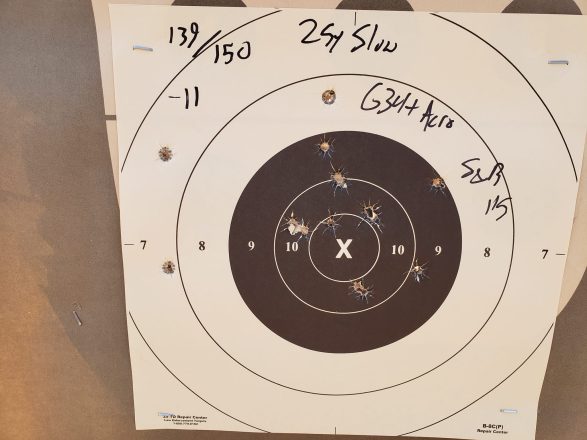
As we can see, scores are close with both methods, but optics receive a slight advantage in both accuracy and speed, even at close distances.
Competition Results of Optics versus Irons on Pistols
For competition, I brought my guns out to some local indoor GSSF matches. These were the simple “Original Course of Fire”, being shot entirely from low ready, with no reloads on the clock. In the first match I scored a perfect 500/500 with my optic equipped Glock and a 490/500 for my irons gun. The ACRO target had all rounds in the X ring, while the irons gun racked up 30-X with 15 rounds in the 10 ring and five rounds in the 8 ring.
Irons Versus Optics
I opted to skip using both guns for the second match due to time constraints. My third GSSF outing resulted in a 498/500, and a 479/500 for optics and irons respectively. Scores were lower overall during this match due to my pistol experiencing multiple stoppages per string of fire. This led to less time to get my rounds off, reducing time to refine my sight picture. As you can see, the points dropped with irons were significant compared to those dropped with optics.
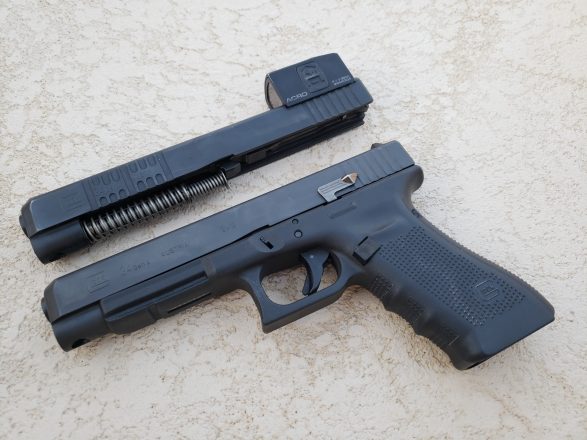
For close comparisons, I used the same G34 frame, swapping to a factory irons slide, and one milled for an Aimpoint ACRO during these matches. Both slides were G34 length with factory components. This is a great representation of the additional mental load required for shooting with irons impacting performance in less than ideal conditions. This leads us into our next topic.
Task Saturation
Optics on your pistol do nothing to increase the mechanical accuracy of the gun. Without training, they do little if any to improve your practical accuracy, especially in unconventional positions. One of the big advantages of optics is reducing the mental burden of shooting.
Instead of balancing mental energy on the front sight, rear sight, and target, I can be purely target focused while simply overlaying the reticle where it needs to go. This simplification of the mechanics of shooting allows more mental bandwidth to be applied to other problems, such as the appropriate use of force, managing bystanders, and more.
Precision
While the mechanical accuracy of my pistol is unaffected by the sighting system I’ve chosen, my precision can be impacted. The substantially refined sight picture offered by the 1-13MOA reticle of an optic provides me the potential for far greater precision. Compare this to common pistol front sights, ranging from 16-32MOA, then factor in the larger rear sight, and the difference becomes readily apparent.
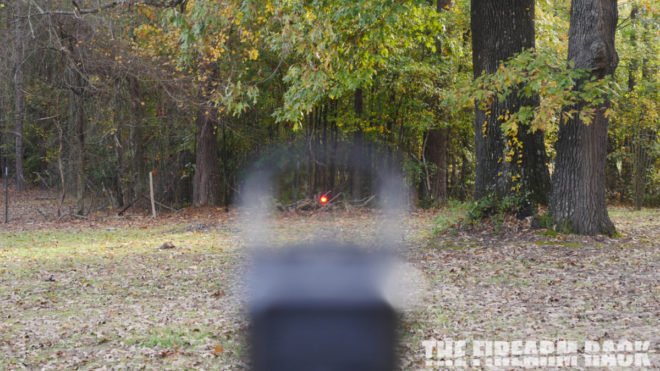
This likely isn’t a factor when targeting an A-Zone or -0 on USPSA/IDPA torsos with generous scoring areas. It does come into play with higher risk shots, such as those at increased distances or smaller anatomical areas. The transition during the Failure Drill is an excellent example of this, quickly moving from high center chest to the nasal/ocular cavity.
Diagnostics
Additionally, I have far more awareness of where my shots are breaking with optics, making me far more accountable. This is due to the substantially higher amount of target that is obscured by irons. That, combined with the reduced amount of feedback I receive from them compared to the fine reticle of my optic, could make a big difference.
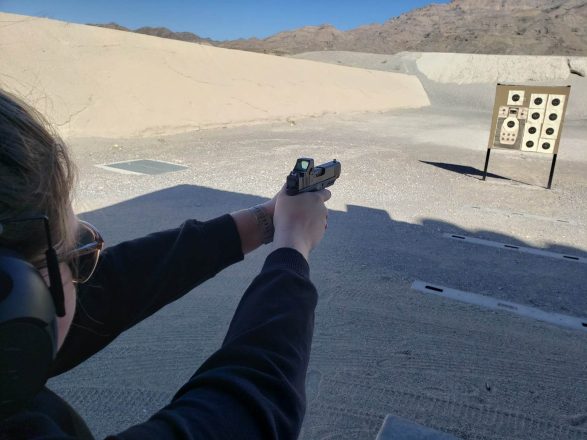
This means I can call my hits most of the time, shooting with far more confidence than I do with irons. These factors are readily apparent when teaching new shooters, with those using optics retaining information and self diagnosing much more quickly.
Final Thoughts on Optics versus Irons on Pistols
Overall, I’m less accurate, slower, and less confident in my marksmanship with irons than with optics. That being said, I am more than comfortable carrying with irons alone, and have regularly done so over the course of nearly a decade. While I think most shooters could benefit from the use of an optic equipped pistol, I do not consider an optic to be a mandatory upgrade to your carry gun. Give them a try, and see if you can stand to gain anything by making the transition.
If you’re considering checking out optics, I highly recommend you learn from a competent instructor. Some great options include Citizens Defense Research, Modern Samurai Project, and Sentinel Concepts.
Support My Work
If you made it this far, thanks for reading! Writing isn’t my full-time profession, and nearly everything I do comes out of my own pocket. Between ammunition, tuition, range fees and more, expenses add up fast. If you like what I have to offer, consider making a donation to my Patreon.
Every bit helps bring more work like this to you, and contributes to shortened timelines or more in-depth work on my part. You’ll also have more direct access to me, offering suggestions for future projects, looking behind the scenes, and getting early access to some content. You can find my Patreon >>HERE<<


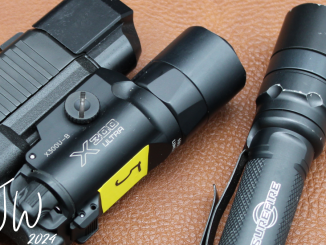
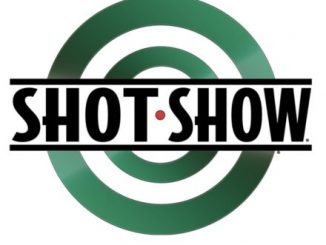

Be the first to comment